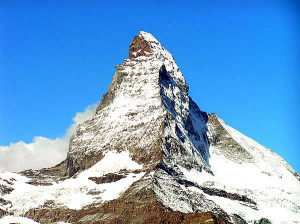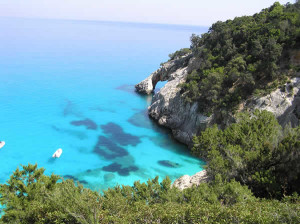This post is also available in:
![]() العربية
العربية ![]() 简体中文
简体中文 ![]() 繁體中文
繁體中文 ![]() Deutsch
Deutsch ![]() Русский
Русский ![]() Türkçe
Türkçe
GEOGRAPHY OF EUROPE
Europe with Asia forms the larger part of the emerged lands of the Earth, called Eurasia. Europe is like an appendix of this immense continent, a peninsula that above all has its individuality thanks to historical and human reasons.
In spite of the modest dimensions regarding the rest of lands emerged, it represents in fact only 7% of the world land’s surface area (10,360,000 sqkm), and accommodates 12.4% (807,289,020 people) of the world population.
Conventionally the geographic limits of the continent are constituted to the north from the Arctic Ocean, to the west from the Atlantic Ocean and to the south from the Mediterranean Sea; while to east the borders are less defined, generally it is considered as the dividing line, which leaves from the Black Sea, follows the northern slopes of the Caucasus, then the shore of the Caspian Sea northwards from where the line goes up to the Ural river and follows the eastern slopes of the Urals until the Sea of Kara.
The contour of the continent is much indented with 37,900 km of coasts and 8% of the territory are formed from islands, the largest being Great Britain (229,885 sqkm) and 27% is formed from peninsulas.
Among the remarkable mountain chains are the Alps, where the highest peak of the continent, the Mont Blanc (Monte Bianco) with its 4810 meters and the Pyrenees are to be found, while the Caucasus is generally considered as a part of Asia.
The southern regions are mountainous and hilly, while moving towards the north beyond the massif of the Alps, the Pyrenees and the Carpathians extended large plains of Central and Northern Europe are situated. In average the altitude of Europe is 340 m above sea level, which gives Europe together with Oceania the quality of a rather low lying continent.
Regarding the rivers in connection with the other continents Europe does not possess long water courses, the main European river being the Volga (3531 km), which is placed in a peripheral position regarding the continent, while the Danube (2860 km), more centrally situated, is the second longest river.
The numerous lakes are of relatively modest dimensions, with the exception of those situated in the Finno-Russian region of the Great Lakes, where the largest European lake, Lake Ladoga (18,400 sqkm) is to be found. Continental extreme points of Europe are: to the north: the Nordkinn (Norway), to the west: the Cabo da Roca (Portugal), to the south: Punta de Tarifa (Spain) and to the east: the inner point of the Gulf of Kara.
English text correction by Dietrich Köster.
CLIMATE IN EUROPE
Although much of Europe is at high latitudes, the relatively warm seas that bathe, and the warm Gulf Stream in the Atlantic Ocean, make much of central and western Europe enjoys a temperate climate, characterized mild winters, summers not too hot, limited temperature ranges, abundant rainfall (800-3000 mm annually). During winter, north of the Alps, Arctic and Siberian air masses often lower temperatures, the winters become colder, the temperature range higher, the rain, not too abundant, are more abundant in summer. Mediterranean climate in the summer months are usually hot and dry and the rainfall is concentrated in spring, autumn and winter, the winters are still mild. In the large flat area that stretches from Poland to the east a continental climate prevails, colder and drier, with long, harsh winters and hot summers, moderate rainfall, mostly summer, the rivers freeze for 4-6 months a year and snow covers the ground for a long time. The northern regions of Europe have low temperatures throughout the year, with snow and frozen ground.
TOURISM IN EUROPE
From the tourist point of view, Europe represents the continent more visited in the world, in agreement with statistics for 2010 of the World Tourism Organization (WTO), Europe with 477,000,000 arrives of tourists represents 54.2% of the world-wide tourism.
In the top ten most visited countries in the world, six are European countries: we find France in the first place, after the United States and China, the fourth is Spain, at the fifth place we find Italy, the United Kingdom is sixth, followed by Turkey, then Germany is the eighth, and finally the ninth and tenth place respectively are occupied by Malaysia and Mexico.
Europe, offer for the tourist several attractions, the continent has important archaeological areas, a very rich historical and cultural patrimony, beautiful cities and small centers, folkloristic, gastronomic, linguistic patrimony of this melting-pot of people, languages and nations.
We can also tell about the natural beauties, of the sea, the mountains, its lakes and rivers, its islands and the hilly zones.
Finally we can also add that in 2013, on a total of 981 Unesco World Heritage Sites, more than 40% are found in Europe. Among nations, at the absolute first place in the world, is Italy with 49 sites, followed by China with 45 sites, Spain is third with 44, fourth is France with 38 (but 1 site is located in Oceania and 1 in Africa), then the fifth place is occupied by Germany with 38.
This post is also available in:
![]() العربية
العربية ![]() 简体中文
简体中文 ![]() 繁體中文
繁體中文 ![]() Deutsch
Deutsch ![]() Русский
Русский ![]() Türkçe
Türkçe
 Travel Guide Travel Guide to the countries of the world
Travel Guide Travel Guide to the countries of the world



